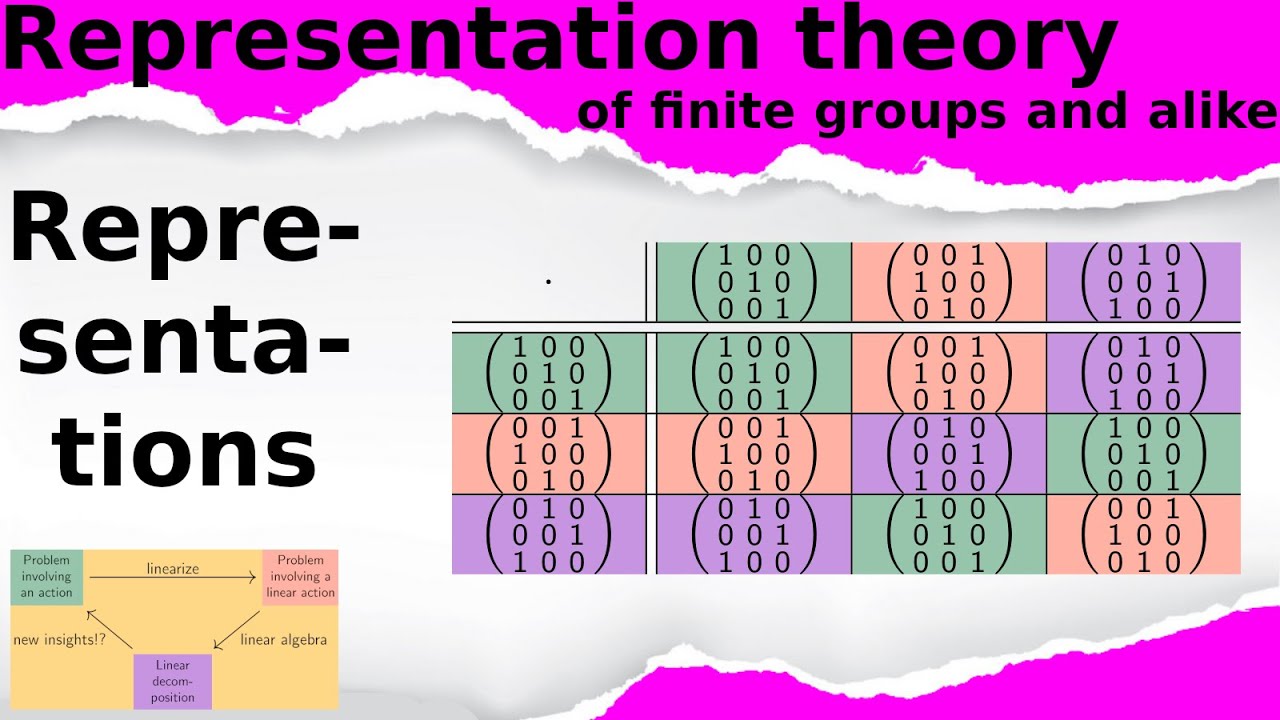
Representation theory is a branch of mathematics that studies abstract algebraic structures by representing their elements as linear transformations of vector spaces. This field bridges the gap between abstract algebra and linear algebra, making complex algebraic concepts more tangible and easier to understand. Representation theory has applications in various areas, including physics, chemistry, and computer science. It helps in understanding symmetry, solving differential equations, and even in the development of algorithms. Whether you're a math enthusiast or just curious about how abstract algebra can be visualized, these 31 facts about representation theory will provide you with a deeper appreciation of this fascinating subject.
What is Representation Theory?
Representation theory is a fascinating branch of mathematics that studies how algebraic structures can be represented through matrices and linear transformations. This field has applications in various areas, including physics, chemistry, and computer science. Let's dive into some intriguing facts about representation theory.
-
Representation theory originated in the 19th century with the work of mathematicians like Ferdinand Frobenius and William Burnside.
-
It primarily deals with groups, algebras, and their actions on vector spaces.
-
The theory helps in understanding symmetries in mathematical objects.
-
Representation theory is crucial in quantum mechanics, where it helps describe the symmetries of physical systems.
-
It also plays a role in crystallography, aiding in the classification of crystal structures.
Key Concepts in Representation Theory
Understanding some key concepts can make representation theory more approachable. Here are some fundamental ideas:
-
A group is a set equipped with an operation that combines any two elements to form a third element while satisfying four conditions: closure, associativity, identity, and invertibility.
-
A representation of a group is a way of expressing the group's elements as matrices so that the group operation corresponds to matrix multiplication.
-
Irreducible representations are representations that cannot be decomposed into smaller representations.
-
Characters are functions that assign a complex number to each group element, providing a powerful tool for studying representations.
-
Modules are generalizations of vector spaces where scalars come from a ring instead of a field.
Applications of Representation Theory
Representation theory isn't just theoretical; it has practical applications in various fields. Here are some examples:
-
In physics, it helps in the study of particle physics and quantum field theory.
-
Chemists use it to understand molecular vibrations and the symmetry of molecules.
-
In computer science, representation theory aids in coding theory and cryptography.
-
Number theory benefits from representation theory in understanding the properties of numbers.
-
Graph theory uses representation theory to study the symmetries of graphs.
Famous Theorems and Results
Several important theorems and results have shaped representation theory. Here are a few notable ones:
-
Maschke's Theorem states that every finite group representation over a field of characteristic zero is completely reducible.
-
Schur's Lemma provides conditions under which a linear map between two irreducible representations is either zero or an isomorphism.
-
Burnside's Theorem helps in classifying finite groups by their character tables.
-
Frobenius Reciprocity relates the representations of a group to those of its subgroups.
-
Peter-Weyl Theorem is fundamental in the representation theory of compact groups.
Representation Theory in Modern Research
Modern research continues to expand the boundaries of representation theory. Here are some current trends and areas of study:
-
Categorical representation theory explores representations in the context of category theory.
-
Geometric representation theory uses geometric methods to study representations.
-
Quantum groups are a generalization of groups that arise in the study of quantum mechanics.
-
Modular representation theory deals with representations over fields of positive characteristic.
-
Lie algebras and their representations are crucial in understanding continuous symmetries.
Fun Facts and Trivia
Representation theory has some quirky and fun aspects too. Here are a few:
-
The Young tableau is a combinatorial tool used in the representation theory of symmetric groups.
-
Brauer characters extend the concept of characters to modular representations.
-
Tensor products of representations can produce new representations.
-
Induced representations allow constructing representations of a group from those of a subgroup.
-
The McKay correspondence links the representation theory of finite groups to algebraic geometry.
-
Representation theory has connections to knot theory, where it helps in understanding the properties of knots and links.
The Final Word on Representation Theory
Representation theory is a fascinating field that bridges abstract algebra with practical applications. From group theory to quantum mechanics, it plays a crucial role in understanding complex systems. This field helps mathematicians and scientists simplify and solve problems that would otherwise be too complicated. Whether you're a student, a researcher, or just curious, diving into representation theory can open up new ways of thinking.
By exploring the 31 facts we've shared, you've gotten a glimpse into the depth and breadth of this subject. It's not just about numbers and equations; it's about seeing patterns and connections in the world around us. So, keep exploring, keep questioning, and who knows? You might just find yourself contributing to the next big breakthrough in representation theory. Happy learning!
Was this page helpful?
Our commitment to delivering trustworthy and engaging content is at the heart of what we do. Each fact on our site is contributed by real users like you, bringing a wealth of diverse insights and information. To ensure the highest standards of accuracy and reliability, our dedicated editors meticulously review each submission. This process guarantees that the facts we share are not only fascinating but also credible. Trust in our commitment to quality and authenticity as you explore and learn with us.
